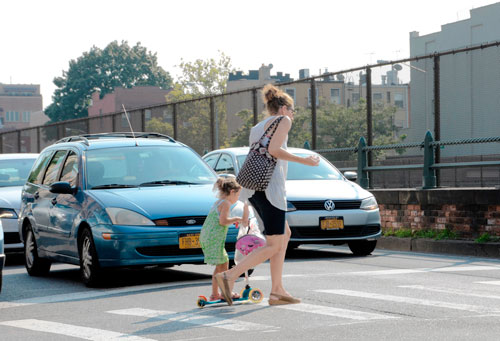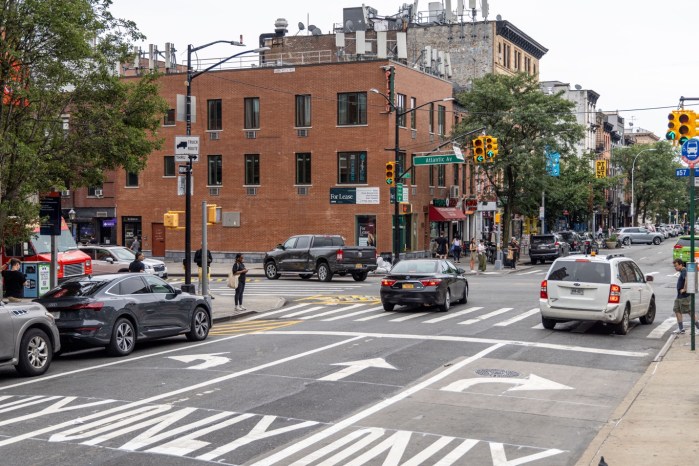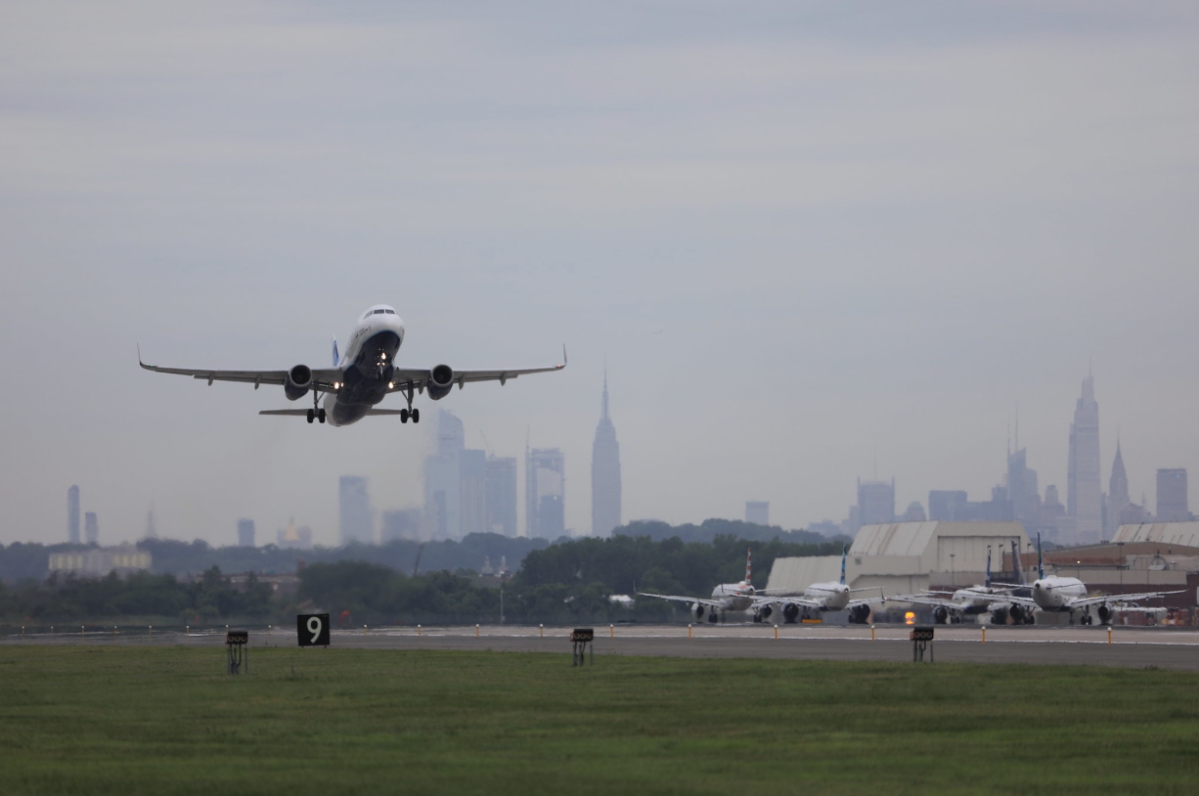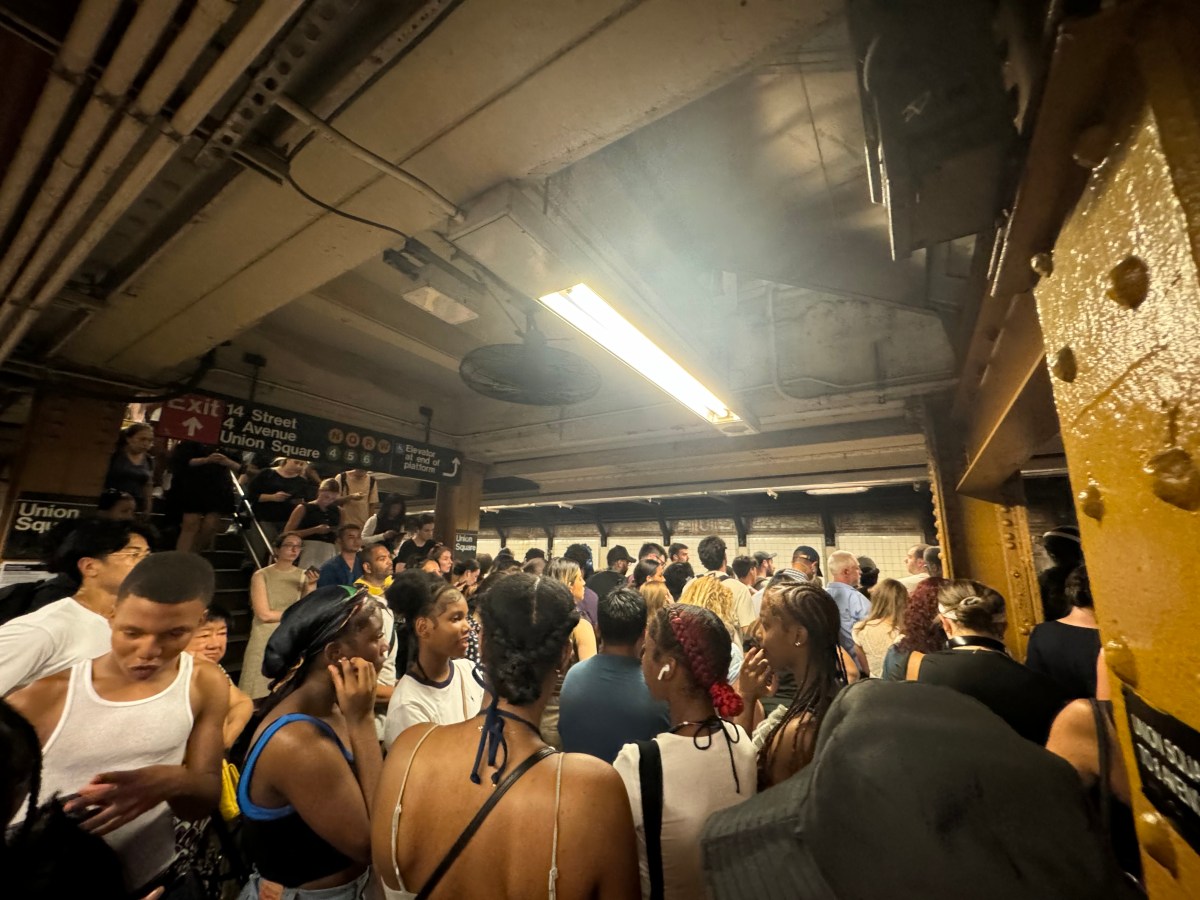Now try to get off the BQE.
Drivers will have to hit the breaks in Cobble Hill thanks to a plan that uses parked cars to make school-side intersections feel less like a NASCAR raceway.
The city wants to narrow Hicks Street near Union Street, where drivers rush to and from the Brooklyn-Queens Expressway, by allowing dozens of cars to park along the thoroughfare during morning rush hour — a tactic the city is increasingly using as a “traffic calming” measure in Brownstone Brooklyn.
The Department of Transportation says a thinner street will help slow drivers, prevent highway spillover traffic and create “a buffer” for walkers crossing the street, which is just few blocks from PS 29.
The road change frees-up roughly 120 parking spaces on the two-lane northbound from 7–10 am on weekdays by scrapping one of the area’s leftover strip of rush hour “no standing” signs — a rule that makes it easier for drivers to speed.
Neighbors are cheering the plan, saying the well-used Cobble Hill-to-Columbia Waterfront District path is a death trap for pedestrians, partly due to a chain-link fence that makes it hard for drivers to see humans.
“The safety issue is crossing over the BQE — but this could be the right prescription for it,” said neighbor Brian McCormick.
In February, neighbors and parents demanded the city make the street safer, claiming it’s only a matter of time before a child gets hit on the way to school.
Hicks Street has two lanes of northbound traffic and one lane of southbound traffic, separated by a median that serves as an overpass above the highway.
The city began changing its policy of allowing drivers to use Brooklyn’s residential streets as service roads in 1999 when morning rush hour “no standing” signs were removed from Clinton Street between Atlantic and Hamilton avenues in Cobble Hill and Carroll Gardens — two neighborhoods where residents had complained for years that hurried drivers used their streets instead of staying on the highway. The city called the Clinton Street plan a “success,” then brought back rush hour parking to Smith Street, Atlantic Avenue, and other nearby streets.
The Department of Transportation recently conducted a new study to examine driving patterns on Hicks Street and determine how to make it safer, according to an agency spokeswoman.
“The current configuration’s wide roadway contributes to speeding,” said spokeswoman Nicole Garcia. “Adjusting parking regulations can help narrow the roadway.”
Community Board 6 will review the plan on Sept. 12 and the city can then give it an official green light.
Reach reporter Natalie O'Neill at noneill@cnglocal.com or by calling her at (718) 260-4505.























